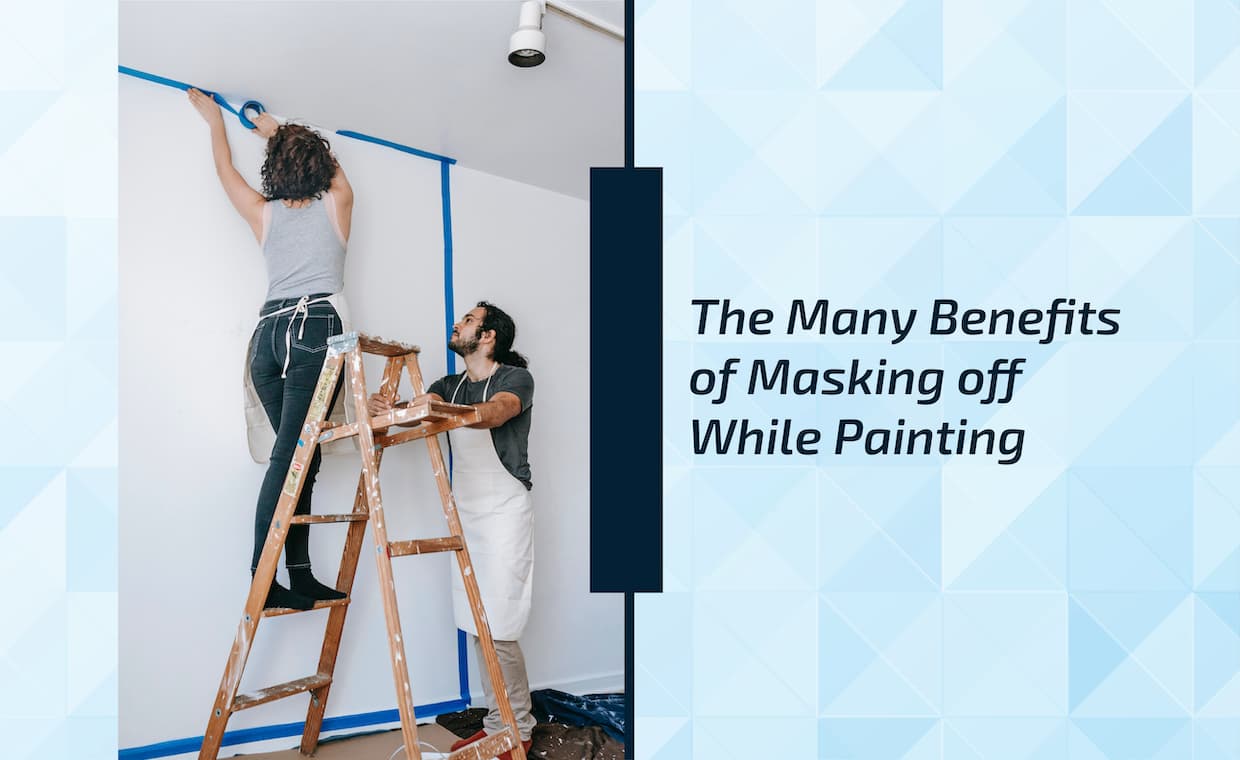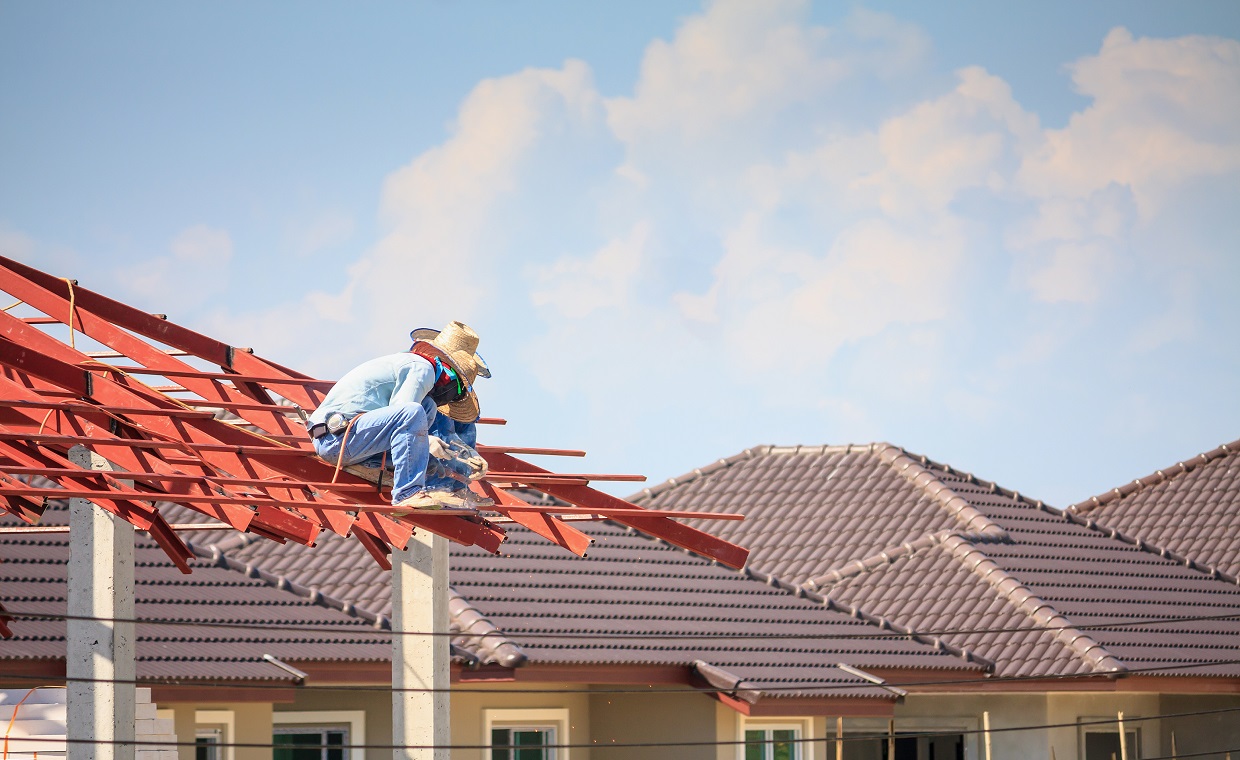
Have you ever walked into a newly painted house and felt put off after noticing paint all over the switches, door frames, knobs, etc.? Paint masking or masking a surface before painting can prevent accidental overpainting and splashing on door frames, windows, door knobs, switches, hinges, etc. This method may seem like a complete waste of time for more experienced and skilled painters, but it does a lot of good for amateurs and DIY painters.
Masking tape for painting is an especially helpful tool when you have picked two or more colours as your interior wall colours. Gharpedia, through this article, brings you the benefits of using masking tape for painting, but first, let’s glance through some points to keep in mind while paint masking.
Points to Remember While Paint Masking

- All Masking Tapes are not suitable for Masking Paint: Firstly, the masking tape mentioned in this article is not the regular one found in stores. The masking tape for painting walls and other surfaces is called a painter’s tape and it varies in size and thickness.
- Use low-tack Tapes: Make sure that your masking tape is low-tack, or else it will pull up the primer, undercoat, or varnish when you remove it after painting. If your tape is very sticky or your only option is regular masking tape, try pressing it down on a rag or your carpet before use.
- Remove the Paint Mask when the Paint is still Wet: Always make sure to remove the paint masking while the paint is still wet. This will prevent the new layer of paint from coming off along with the tape after it has dried.
- Use Newspaper where necessary: If you are working with spray paints, glass, carpets, floors, details, and other hardware, you may need extra protection. In such cases, you can use newspapers in addition to the painter’s tape.
- Tuck the Tape at the Carpet’s Edge: When applying painter’s masking tape at the edges of your carpet, make sure that you tuck the tape under the skirting board to create a proper seal.
- Clean the Surface: Make sure the surface is clean before applying the paint mask.
- Seal Edges: Make sure to seal all the edges and gaps in the tape by running your fingers over it and applying pressure on it multiple times.
- Overlap Strip Edges: When using two strips of tape next to each other, overlap the edge of one tape with the other, so there are no gaps.
Benefits of Using Masking Tape for Painting
Let’s look at the benefits of using a paint masking tool, whether it is masking tape or masking paper, for painting.
01. Reduces the Need for Clean-Up

Masking off before a painting job will save you from having to clean up any mistakes. It prevents the paint from going onto surfaces where it doesn’t belong. For example, masking paint will stop any paint from going onto the adjacent wall when painting walls in two different colours. Painting using masking tape will save you time and effort by helping you avoid a lot of clean-up.
02. Protects Surfaces From Damage

When painting walls or other surfaces, objects like window and door frames, door knobs, switches, etc., can get covered in paint splatter, which will need to be removed by scraping. Masking tape will protect these surfaces from paint splatter, which in turn will protect them from scratches and other damage.
03. Allows You to Paint Right to The Edge

It is not easy for anyone to paint a surface carefully without making any mistakes, especially if they are not professionals. By using the paint masking technique, you can paint right to the edge of a surface without having to worry about getting paint on an adjacent area. You also don’t need to be a master of special techniques like “cutting in”.
04. Helps You Work Faster

If you mask off your area properly, your work is much faster as you don’t have much to clean up. One of the main rules of cutting in is that you should not hurry. Master painters who are skilled at cutting in may be able to pull off the task quicker than most people, but, if you are inexperienced, it is best if you work patiently.
The use of a paint masking tool will help you work as fast as you want without having to worry about paint going where it doesn’t belong. There might be a little bleeding under the tape, but that requires minimal clean up.
05. Keeps Movable Parts Working Smoothly

Door and window hinges, as well as knobs and other fixtures, need to remain clean to function properly. If even a little paint gets into these areas, it becomes hard to remove, and bits of paint will remain in hard-to-reach places. This is why most professional painters cover such parts with masking tape and plastic bags.
06. Adds Visual Appeal

The additional benefit of paint masking is that it makes your finished work look professional. Masking tapes for painting help you paint neatly near edges, corners, and around objects like hinges, knobs, and switches. Neatly painted surfaces with pristine details add visual appeal to the overall look of a room.
07. Helps Protect Flooring And Carpets

Using two-inch-wide masking tape at the intersection of the wall and floor will protect your carpet from dripping paint. Masking off can also help you protect delicate and expensive flooring from dripping paint and the subsequent clean-up. You can always use a drop cloth for added protection.
08. Helps You in Painting Straight Lines

Perfectly straight painted lines call for perfectly steady hands and good judgement. With masking tape, you can paint perfectly straight lines without having to worry about making any mistakes. If you tape the entire surface, you can paint a straight line across the whole area in one motion. This will also save you time and effort. Just make sure that your paintbrush is loaded with enough paint.
09. Makes You Look Like A Pro

Professionals use a method called cutting in when painting corners and edges, straight lines, and clean hinges, knobs, switchboards, and other details. It is a skill that takes a lot of time and experience to master, and even then, it can be out of reach for some people. With masking tape, however, anyone can look like a professional painter and pull off neat and visually appealing jobs.
Conclusion
Ultimately, the goal for any painter is to do the best job they can with the skills that they possess. If you have a choice between using a difficult and unfamiliar technique and using affordable tools that will help you get the best results, always choose the latter. Paint masking is an easy technique that makes use of masking tapes, which are relatively cheaper than most other painter’s tools.
We hope that this article has helped you understand why paint masking is a useful technique. If you are interested in more painting tips, you can check out our other articles:
Tips to Maintain Paint Consistency During The Paint Job!
Schedule for Painting: Follow to Get a Perfect Paint Job of your House
Image Courtesy: Image 4, Image 7
Author Bio
Andrea Noronha – Andrea Noronha is a content writer and editor with over 4 years of experience. Although she comes from a finance background, Andrea is passionate about blogging about interior design. Her other interests include travelling, baking, and digital marketing.






























